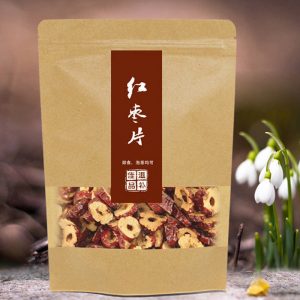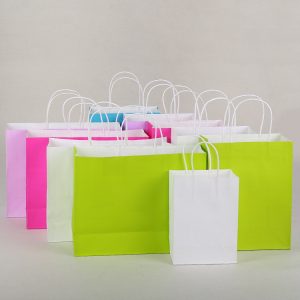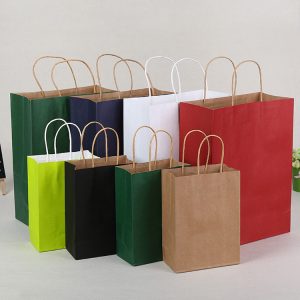Basic knowledge: approaching the US waste standard
US Waste No. 1 Waste paper: It consists of a mixture of waste paper of different quality, and is not limited by the packaging method or fiber composition. Miscellaneous items must not exceed 2%. The total amount of unqualified waste paper shall not exceed 10%. US Waste No. 2 This type of waste paper is currently not used. US Waste No. 3 Advanced Waste Miscellaneous Paper: It is composed of a mixture of different quality waste papers that have been sorted and packaged. The groundwood content of such waste paper (coated or uncoated) shall not exceed 10%. Miscellaneous items shall not exceed 0.5%. The total amount of unqualified waste paper shall not exceed 3%. US Waste No. 4 Box Cardboard Scrap: New scrap in the process of manufacturing folding cartons, assembling cartons and other paperboard products of the same type, packaged for delivery. Miscellaneous items must not exceed 0.5%. The total amount of unqualified waste paper shall not exceed 2%. US Waste No. 5 Factory Wrapper: Waste paper used for the wrapping of web, paper, and flat paper, packaged and supplied. Miscellaneous items must not exceed 0.5%. The total amount of unqualified waste paper shall not exceed 3%. US Waste No. 6 Old newspaper: used newspapers, packaged and supplied, other paper content is not more than 5%. Miscellaneous items must not exceed 0.5%. The total amount of unqualified waste paper shall not exceed 2%. US Waste No. 7 Special old newspaper: The discarded and discarded newspapers are packaged and supplied. Such old newspapers are neither exposed to the sun, nor are other miscellaneous waste papers mixed. The gravure and color printing portions do not exceed the normal number. No debris is allowed. The total amount of unqualified waste paper shall not exceed 2%. US Waste No. 8 Super-class old newspaper (for deinking): After being selected and not tidal, it will be packaged and supplied. Such old newspapers are not exposed to sunlight, and do not contain magazines, blank paper, printers, expired newspapers and other miscellaneous waste papers, and their gravure and color portions do not exceed normal quantities. Do not wrap in other paper. No debris is allowed. The total amount of unqualified waste paper shall not exceed 0.25%. US Waste No. 9 Newspapers with excessive circulation: The excess circulation of newspapers is packaged or supplied in bundles. The gravure and color printing parts do not exceed the normal number. No debris or unqualified waste paper is allowed to mix. US Waste No. 10 Old magazine: dry, coated old magazines, catalogues and similar prints. Packaged for delivery. Allow a small amount of uncoated newspaper. Miscellaneous items must not exceed 1%. The total amount of unqualified waste paper shall not exceed 3%. US Waste No. 11 Old corrugated carton: old corrugated carton, the surface layer is imitation boxboard pulp; hemp pulp or kraft pulp, packaged. Miscellaneous items must not exceed 1%. The total amount of unqualified waste paper shall not exceed 5%. US Waste 12 old double corrugated carton: dry, double-choured old corrugated carton, sourced from supermarkets, industrial/commercial establishments; its surface layer is imitation boxboard pulp, hemp pulp or kraft pulp; Picking, no debris, foreign corrugated paper, glue or wax. Packaged for delivery. Miscellaneous items must not exceed 0.5%. The total amount of unqualified waste paper shall not exceed 2%. US Waste No. 13 Double-faced leather corrugated paper new trim: corrugated paper trim, its noodle layer is hemp pulp or kraft pulp, or imitation boxboard pulp, packaged for delivery. Insoluble adhesives, deformed webs, recessed or protruding core layers are not allowed. The core or top layer should be untreated. No debris is allowed to mix in. The total amount of unqualified waste paper shall not exceed 2%. US Waste No. 14 This type of waste paper is currently not used. US Waste No. 15 Old brown kraft paper: old brown kraft paper bag, packaged for delivery. There are no improper linings and no items in the bag. No debris is allowed. The total amount of unqualified waste paper shall not exceed 0.5%. US Waste No. 16 Kraft paper mixed scrap: consists of a mixture of brown kraft paper new trim, kraft paper, paper bags, etc., packaged for delivery. There must be no stitching on the paper bag. No debris is allowed. The total amount of unqualified waste paper shall not exceed 1%. US Waste No. 17 Handbag Waste: It consists of natural kraft paper and its new trim, which is treated with humidification or clay. With printing ink, or no printing ink. No debris is allowed to mix in. The total amount of unqualified waste paper shall not exceed 2%. US Waste No. 18 New Color Kraft Paper: Composed of colored kraft paper and its new trim and paper bags. Paper must not have stitching. No debris is allowed. The total amount of unqualified waste paper shall not exceed 1%. US Waste No. 19 Grocery Bag Waste: consists of brown kraft paper bags, new scraps, kraft paper, and printed paper bags. No debris is allowed. The total amount of unqualified waste paper shall not exceed 1%. US Waste No. 20 Multi-layer kraft paper bag waste: consists of new multi-layer brown kraft paper bag waste and bag paper, including printed paper bags with errors. Paper must not have stitching. No debris is allowed. The total amount of unqualified waste paper shall not exceed 1%. US Waste No. 21 Brown leather envelope new trim: consists of brown leather envelope new trim and envelope paper. Without printing ink. Packaged for delivery. No debris is allowed. The total amount of unqualified waste paper shall not exceed 1%. US Waste No. 22 Mixed waste paper edge with ground wood pulp: cut edges of magazines, catalogues and similar prints, packaged for delivery. It may contain ground wood pulp or it may be coated. It is allowed to incorporate a cover and insert with printing ink, or it can be mixed with colored paper and dark printed paper. No debris is allowed. The total amount of unqualified waste paper shall not exceed 2%. US Waste No. 23 Waste Phone Book: A waste phone book provided by or provided to the phone book printer. Must be clean and free of moisture. No debris is allowed. The total amount of unqualified waste paper shall not exceed 0.5%. US Waste No. 24 Blank newspaper: White newspaper without printing ink and other paper containing white groundwood and its scraps are packaged and supplied. Do not mix coated paper. No debris is allowed. The total amount of unqualified waste paper shall not exceed 1%. US Waste No. 25 Computer Paper with Groundwood: A form paper for data processors that allows for the incorporation of a certain amount of surface treated paper. No debris is allowed. The total amount of unqualified waste paper shall not exceed 2%.
US Waste No. 26 Blank Publication Paper: Paper containing white groundwood pulp, filled or coated paper or trim. Without printing ink. Packaged for delivery. No debris is allowed. The total amount of unqualified waste paper shall not exceed 1%. US Waste No. 27 Single-page book paper edge: the cutting edge of magazines, catalogues and other similar prints, packaged and supplied. The total amount of dark parts on the cover and insert with color printing must not exceed 10%. The fiber composition of the paper is mainly bleached chemical pulp. Colored paper must not exceed 2%. No special or general newspapers are allowed. No debris is allowed. The total amount of unqualified waste paper shall not exceed 1%. US Waste No. 28 Soft coated white paper side: various white printing paper and paper edges made of sulfite pulp and kraft pulp, coated and uncoated. Packaged for delivery. Without printing ink. It may contain a small amount of groundwood pulp. No debris is allowed. The total amount of unqualified waste paper shall not exceed 1%. US Waste No. 29 This type of waste paper is not currently in use. US Waste No. 30 Hard white paper edge: white bond paper without surface treatment, thin paper or writing paper and paper edge, packaged for delivery. Do not contain groundwood or printing ink. No debris is allowed. The total amount of unqualified waste paper shall not exceed 0.5%. US Waste No. 31 Hard White Envelope Scrap: Envelope trim or other untreated white base paper, packaged for delivery. Do not contain groundwood or printing ink. No debris is allowed. The total amount of unqualified waste paper shall not exceed 0.5%. US Waste No. 32 This type of waste paper is not currently in use. US Waste No. 33 Color Envelope New Corners: Corners of colored envelopes, paper edges and envelope paper, packaged for delivery. Most of these papers are made from bleached sulphite pulp, dyed but not surface treated. No debris is allowed. The total amount of unqualified waste paper shall not exceed 2%. US Waste No. 34 This type of waste paper is not currently in use. US Waste No. 35 Semi-bleached scrap: Paper made from sulfite pulp or kraft pulp and its scraps are packaged for delivery. This includes document envelope paper, white form card edge trimming, milk bottle cardboard, white label paper, etc., all without surface treatment, and does not brush insoluble materials such as ink, wax, oil-proof laminate, adhesive or paint. . No debris is allowed. The total amount of unqualified waste paper shall not exceed 2%. US Waste No. 36 White Form Paper Jam: A white form jam made mainly of sulfite pulp or kraft pulp for use in a form preparation machine. With printing ink. It can be used with white cardboard with colored thin lines. No debris is allowed. The total amount of unqualified waste paper shall not exceed 1%. US Waste No. 37 Selected office waste paper: Non-tidal office waste paper, mainly white and colored wood-free paper, without unbleached fiber. A small amount of waste computer paper and fax paper containing ground wood pulp are allowed. Packaged for delivery. Miscellaneous items must not exceed 2%. The total amount of unqualified waste paper shall not exceed 5%. US Waste No. 38 selected color book paper: book paper made from sulfite pulp or kraft pulp, bond paper, book paper, writing paper, etc. and its paper edges and trims, may be white or Dyed, with or without printing inks, and other paper grades containing similar fiber and filler content. Do not contain paper that has been surface treated, coated or laminated, nor has too much printing ink. Miscellaneous items must not exceed 0.5%. The total amount of unqualified waste paper shall not exceed 2%. US Waste 39 White Account Paper: Made with sulfite pulp or kraft pulp, unused paper and trim, white or colored, with and without printing ink, used to make printed forms , continuity forms, filling out data forms, and other printed materials such as sales publications and catalogues. All paper must be uncoated and free of laser paper and office waste. Allow a small amount of carbon-free carbon paper. Miscellaneous items must not exceed 0.5%. The total amount of unqualified waste paper shall not exceed 2%. US Waste No. 40 picking white book paper: thin paper made from bleached sulphite pulp or bleached kraft pulp, scraps of bond paper and writing paper, and cut books, whole paper waste paper, with Printing inks and whole sheets of paper and paper edges without printing inks, etc., also include all other papers made with the same type of pulp and filler content. Do not carry paper that has been surface treated, coated or laminated, nor does it contain paper with too much printing ink. Miscellaneous items must not exceed 0.5%. The total amount of unqualified waste paper shall not exceed 2%. US Waste No. 41 White Account Paper: Made of sulfite pulp or kraft pulp, unused paper and trim, white, printed and unprinted ink, this paper is used to make printed forms, continuous Sex forms, fill out information forms, and other printed materials such as sales publications and catalogues. All paper must be uncoated and free of laser paper and office waste. Allow a small amount of carbon-free carbon paper. Miscellaneous items must not exceed 0.5%. The total amount of unqualified waste paper shall not exceed 2%. US Waste No. 42 Computer Paper: Form paper made of bleached sulfite pulp or bleached kraft pulp for use in data processors. It is allowed to include colored paper strips, which can be printed by contact on a computer or by non-contact printing (such as laser printing). This type of paper should not exceed 5%. All paper must be surface treated without surface treatment. No debris is allowed. The total amount of unqualified waste paper shall not exceed 2%. US Waste No. 43 Coated book paper: paper made from bleached sulphite pulp or bleached kraft pulp and its paper edges, and includes cut books or whole knife waste paper. These papers are coated and can be printed with or without printing ink. It is allowed to contain a certain amount of groundwood pulp. No debris is allowed. The total amount of unqualified waste paper shall not exceed 2%. US Waste No. 44 Coated paper containing groundwood: Unused coated wood-coated paper and paper edges, including cut-out books. These papers are coated and come with printing inks. Newsprint containing groundwood is not included in this type of paper. No debris is allowed. The total amount of unqualified waste paper shall not exceed 2%. US Waste No. 45 Scraps of bleached sulphate paper with printing ink: scrap of paper made from bleached sulphate pulp with printing ink. Does not include the entire sheet of paper with printing errors and the paper tray with printing ink. Insoluble materials such as waxes, oil-proof laminating agents, bronzing materials and their inks, adhesives or coatings are also not allowed. Miscellaneous items must not exceed 0.5%. The total amount of unqualified waste paper shall not exceed 2%. US Waste No. 46 Printed error-bleed bleached sulphate paper: Paper made from bleached sulphate pulp was turned into waste due to printing errors. It also includes cartons with printing inks. It is not allowed to contain oil-proof laminating agents, bronzing materials and insoluble substances such as inks, adhesives or coatings. Miscellaneous items must not exceed 1%. The total amount of unqualified waste paper shall not exceed 2%. US Waste No. 47 Bleached Kraft Paper without Printing Ink: Flat paper made from bleached kraft pulp, web and its trim, without printing ink. Insoluble materials such as waxes, oil-proof laminates, bronzing materials and their inks, adhesives or coatings are not allowed. No debris is allowed. The total amount of unqualified waste paper shall not exceed 1%. US Waste No. 48 No. 1 Bleached Paper Cup: Untreated paper cup trim, or paper used for paper cups, coated or uncoated. It is allowed to be blended with scraps with a small amount of color printing. Paper must not be coated with wax, multi-layer paint or other insoluble paint. Packaged for delivery. No debris is allowed. The total amount of unqualified waste paper shall not exceed 0.5%. US Waste No. 49 No. 2 bleached, paper cup with printing: paper with printed paper, paper scraps, untreated, coated or uncoated, paper for paper cups but misprinted. The glue must be water soluble. Do not use wax, multi-layer coatings or other insoluble coatings. Packaged for delivery. No debris is allowed. The total amount of unqualified waste paper shall not exceed 1%. US Waste No. 50 Paper paper without printing, bleached, kraft pulp: bleached, untreated, unprinted paper or scrap. It can contain white clay coated and uncoated bleached paperboard. Packaged for delivery. No debris is allowed. The total amount of unqualified waste paper shall not exceed 0.5%. US Waste No. 51 Paper and paper with printing, bleaching, and kraft pulp: bleached, untreated, printed paper and paper. It can contain white clay coated and uncoated bleached paperboard. Do not carry insoluble ink or paint. No debris is allowed. The total amount of unqualified waste paper shall not exceed 1%.
For more information about paper bags, please pay attention to sinceyoungpackage, if you have any comments on our information, welcome feedback.



